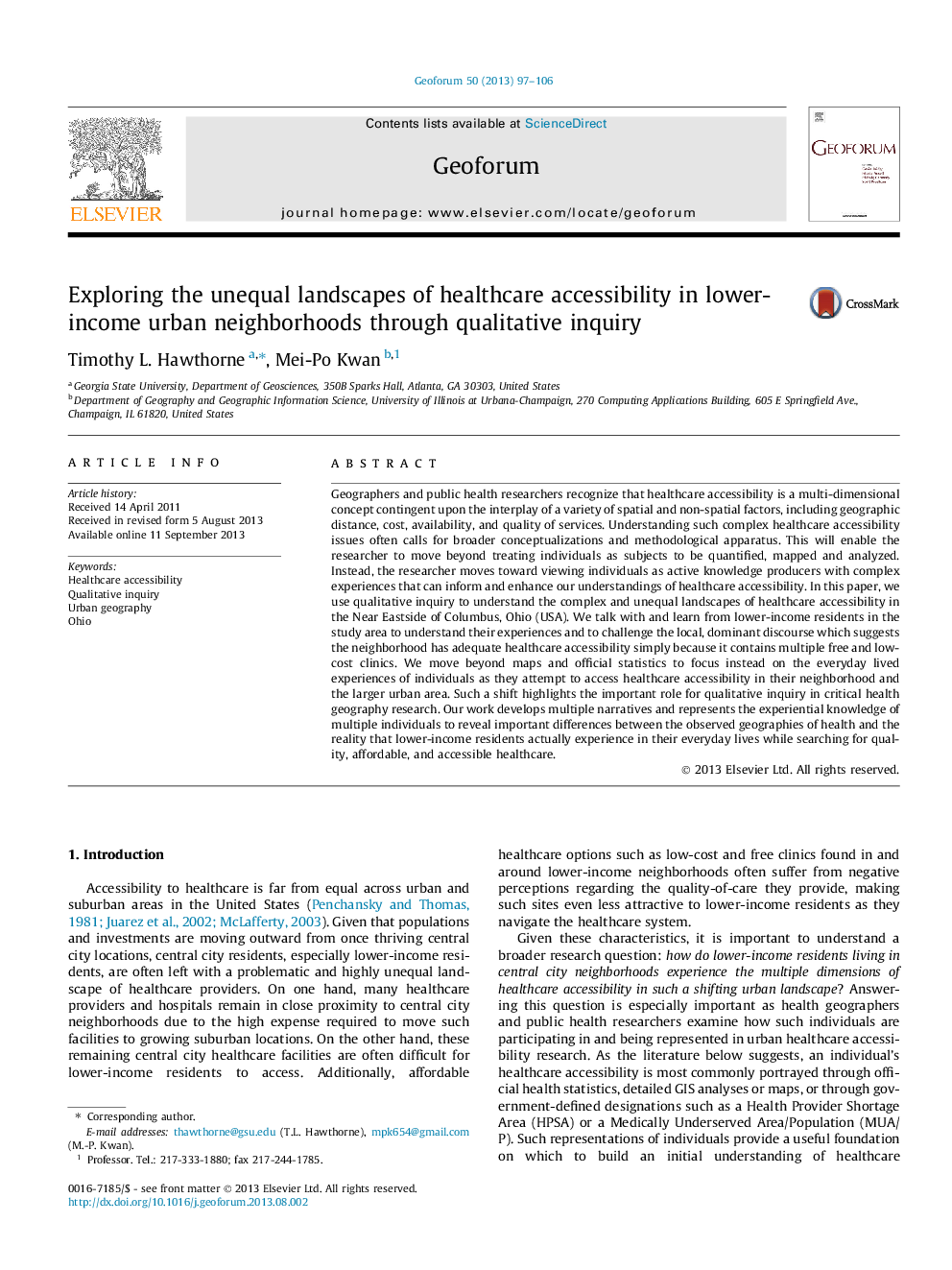| Article ID | Journal | Published Year | Pages | File Type |
|---|---|---|---|---|
| 5074123 | Geoforum | 2013 | 10 Pages |
Abstract
Geographers and public health researchers recognize that healthcare accessibility is a multi-dimensional concept contingent upon the interplay of a variety of spatial and non-spatial factors, including geographic distance, cost, availability, and quality of services. Understanding such complex healthcare accessibility issues often calls for broader conceptualizations and methodological apparatus. This will enable the researcher to move beyond treating individuals as subjects to be quantified, mapped and analyzed. Instead, the researcher moves toward viewing individuals as active knowledge producers with complex experiences that can inform and enhance our understandings of healthcare accessibility. In this paper, we use qualitative inquiry to understand the complex and unequal landscapes of healthcare accessibility in the Near Eastside of Columbus, Ohio (USA). We talk with and learn from lower-income residents in the study area to understand their experiences and to challenge the local, dominant discourse which suggests the neighborhood has adequate healthcare accessibility simply because it contains multiple free and low-cost clinics. We move beyond maps and official statistics to focus instead on the everyday lived experiences of individuals as they attempt to access healthcare accessibility in their neighborhood and the larger urban area. Such a shift highlights the important role for qualitative inquiry in critical health geography research. Our work develops multiple narratives and represents the experiential knowledge of multiple individuals to reveal important differences between the observed geographies of health and the reality that lower-income residents actually experience in their everyday lives while searching for quality, affordable, and accessible healthcare.
Related Topics
Social Sciences and Humanities
Economics, Econometrics and Finance
Economics and Econometrics
Authors
Timothy L. Hawthorne, Mei-Po Kwan,
